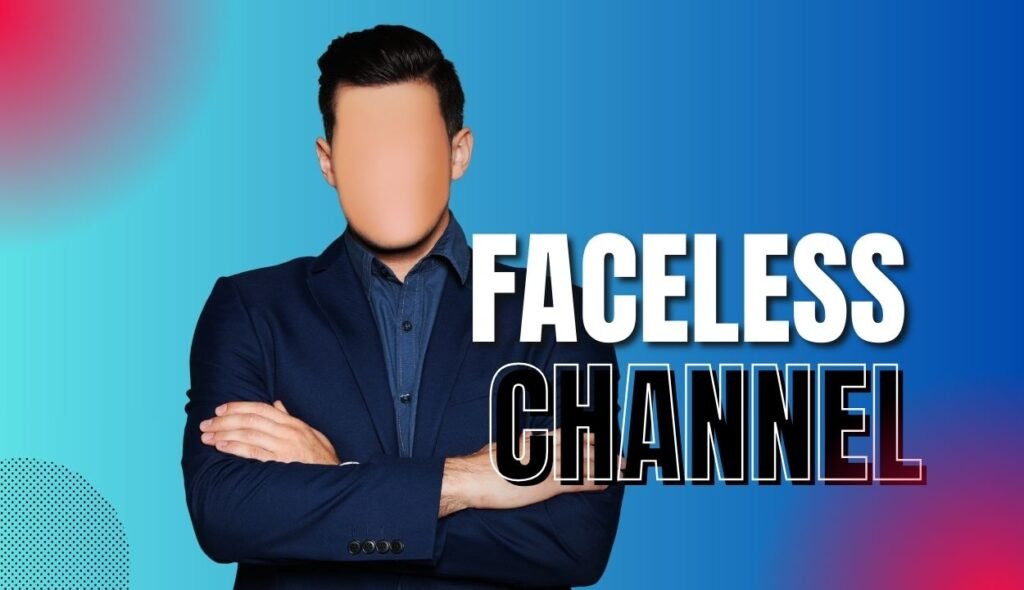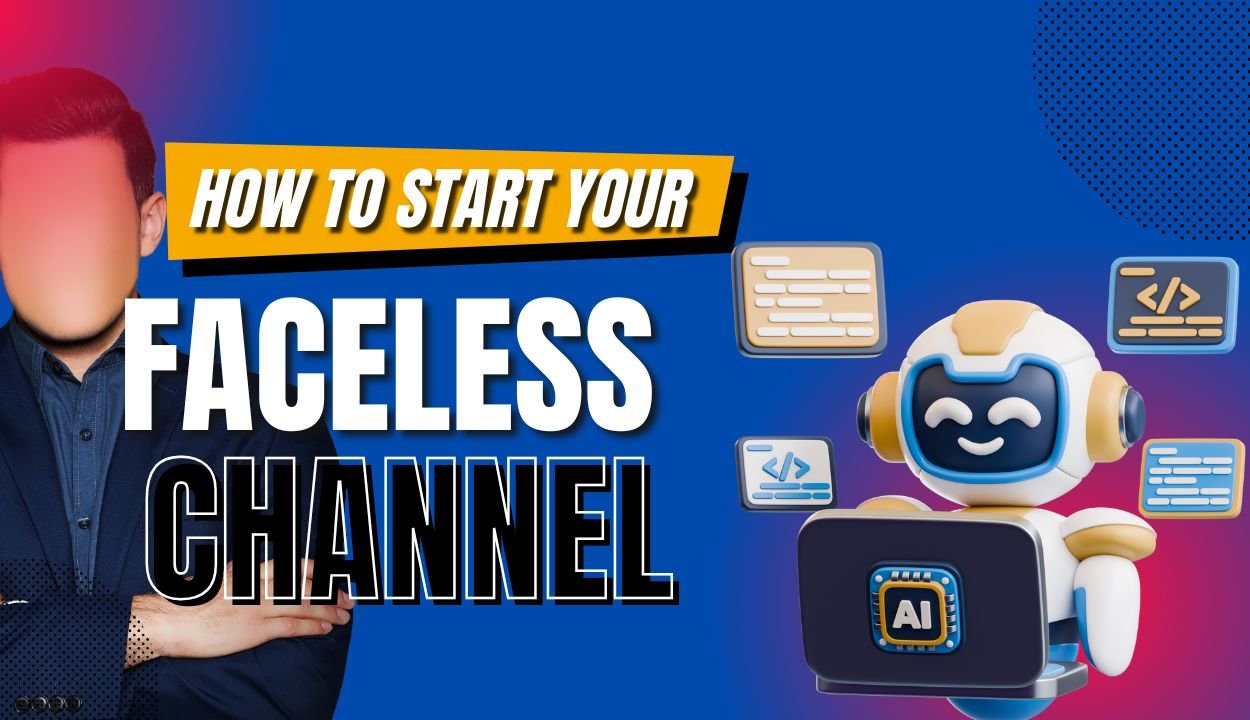Starting a YouTube channel no longer requires expensive equipment, a camera-ready personality, or hours of manual editing. With today’s AI tools, you can build, brand, and automate a complete faceless YouTube channel — all while keeping things simple and professional.
Think of this guide as a recipe: I’ll show you the exact ingredients (tools) and the method (steps) you need to follow to cook up your very own AI-powered channel.

Ingredients: What You’ll Need
- ChatGPT (or similar AI) – for niche research, branding ideas, and video scripts
- AI design tools (e.g., Leonardo AI, Canva, or Adobe Firefly) – for logos, channel art, and thumbnails
- AI voice generators (e.g., ElevenLabs, Murf, Play.ht) – for realistic voiceovers
- AI video/image tools (Leonardo AI, Ideogram, Runway, or Pika Labs) – for visuals and animations
- Video editing software (CapCut, Premiere Pro, DaVinci Resolve, or KineMaster)
- Free subtitle tools (e.g., Submagic, Clipchamp)
Step 1: Choosing a Profitable Niche
Normally, picking a niche involves three factors: interest, experience, and profit. But since AI is doing most of the work, you can skip the first two and focus on niches with high earning potential.
💡 Use ChatGPT to ask:
“Give me a list of the most profitable faceless YouTube niches with high RPM (Revenue Per Mille).”
Common high-RPM niches include:
- Personal Finance & Investing
- Business & Entrepreneurship
- Technology & AI
- Crypto & Real Estate
👉 Example: Personal finance remains one of the most profitable niches, with CPMs ranging between $15–$30 in the U.S.
Step 2: Branding Your Channel
Once you’ve chosen a niche, it’s time to create a strong brand identity.
- Name Selection – Use ChatGPT to suggest unique channel names. Before finalizing, search YouTube to ensure the name isn’t heavily used.
- Logo Design – Ask ChatGPT for logo concepts (e.g., “money tree, shield with dollar sign, globe with coins”). Then feed the prompt into Leonardo AI or Canva to generate a professional design.
- Channel Art – Keep it simple. Use your logo, a tagline, and a clean banner design.
- Channel Description – Let ChatGPT draft a short, engaging description optimized for keywords. Example: “Simple finance tips, smart investing strategies, and money lessons for a wealthier future.”
Step 3: Writing Scripts that Don’t Sound Robotic
This is the most critical part of your channel. AI can generate scripts, but if you only give basic prompts like “Write a script about 5 financial mistakes to avoid in your 20s”, the result will feel flat and robotic.
Here’s how to improve:
- Set the video length (e.g., 8–10 minutes)
- Define your audience (e.g., 18–30 year-olds in the U.S. who want financial independence)
- Add persona details (desires, struggles, pain points)
- Choose a tone (inspirational, authoritative, casual, or humorous)
- Pick a storytelling framework (Hero’s Journey, Problem–Solution, or Three-Act Structure)
- Include emotional triggers (fear, excitement, urgency)
- Retention tactics (hooks, transitions, pattern breaks, and cliffhangers)
- Smooth call to action (e.g., redirect viewers to your next video)
👉 Example instruction:
“Write a sophisticated 10-minute YouTube script for 18–30 year olds in the U.S., explaining 5 financial mistakes to avoid in your 20s. Use an inspirational tone, include emotional triggers like fear and urgency, follow a Problem–Solution structure, and add a strong call to action at the end.”
Step 4: Generating Voiceovers
A script is useless without a good voice. Instead of robotic free tools, use premium AI voices.
- ElevenLabs is currently one of the best, producing ultra-realistic voices with emotion and pacing.
- Each free account offers about 10,000 characters (≈ 8–10 minutes of audio). Multiple accounts or a paid plan will give you more flexibility.
Tips for natural voiceovers:
- Adjust stability (lower = more dynamic, higher = more consistent)
- Test different voices until one matches your brand
- Generate long scripts in parts (max 5,000 characters per clip)
Step 5: Creating Visuals & Editing Videos
Now you’ll combine everything into a polished video.
- Visuals – Paste each line of your script into ChatGPT and ask it to generate prompts for AI images or animations.
- Example: “Generate a 16:9 image of a 25-year-old looking worried at monthly bills, realistic style, cinematic lighting.”
- Use Leonardo AI, Ideogram, or Runway to turn prompts into visuals.
- Editing – Import voiceovers and visuals into a video editor.
- Add transitions, zoom effects, and motion to keep viewers engaged.
- Lower image opacity slightly if adding subtitles.
- Music & Subtitles – Add copyright-free background music (YouTube Audio Library is a good source). Generate subtitles with Submagic or Clipchamp.
Step 6: Designing Click-Worthy Thumbnails
Thumbnails make or break your video’s performance. AI tools can help here too.
- Ask ChatGPT for thumbnail ideas with moods (e.g., “A cracked piggy bank on a dark gloomy background with bold red text saying ‘Money Mistakes!’”).
- Use Leonardo AI, Canva, or Fotor to generate and edit thumbnails.
- Always test variations: bright vs. dark backgrounds, red vs. yellow text, object-focused vs. person-focused images.
Final Thoughts
Creating a faceless YouTube channel is no longer an overwhelming task. With the right AI tools, you can:
- Pick a profitable niche in minutes
- Design logos, branding, and thumbnails without hiring a designer
- Write human-like scripts with storytelling frameworks
- Generate realistic voiceovers and visuals
- Edit, subtitle, and publish professional-quality videos
The beauty of this recipe is that everything is scalable. Once you master the workflow, you can consistently produce high-quality videos with minimal manual effort.
🚀 Remember: Success on YouTube still requires patience, creativity, and consistency. AI can automate the process, but your unique vision and storytelling will set you apart.

